Dinosaur discovery, self-sufficient space flight and structural biology for students Understand article
Science in School is published by EIROforum, a collaboration between eight of Europe’s largest inter-governmental scientific research organisations (EIROs). This article reviews some of the latest news from the EIROs.
CERN: The past, present and future of the Large Hadron Collider
In March 1992, CERN launched the Large Hadron Collider (LHC) experimental programme, revealing to the public its initial ideas for building the world’s largest particle accelerator.
Last year marked the 25th anniversary of this debut, and to celebrate, CERN hosted a commemorative symposium. As well as looking back at the history of the LHC, the event reflected on the bold decisions that led to the development of this remarkable facility and its collaborative experiments. The symposium concluded with a review of recent experimental results from the four large LHC experiments: ALICE, ATLAS, CMS and LHCb.
It was a particularly successful year for the LHC in 2017, as the accelerator produced 5 million billion (1015) proton-proton collisions – exceeding its target, and collecting huge amounts of data that scientists will continue to analyse this year.
2018 will be the final year of data collection for the LHC before a ‘technical stop’, set to last from 2018 to early 2021. This will allow CERN’s technicians, engineers and physicists to renovate and improve the accelerator, and to prepare the detectors to fully exploit the improved performance of the machine.
Based in Geneva, Switzerland, CERN is the world’s largest particle physics laboratory.
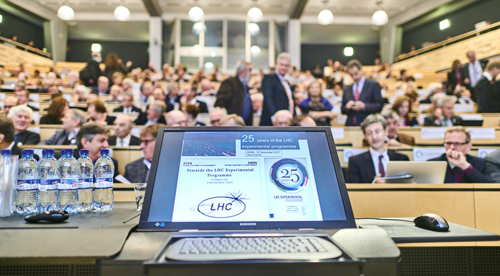
Julien Ordan/CERN
EMBL: ‘Seeing is believing’ Insight Lecture attended by students worldwide
Around 1500 students from 18 countries participated in the 2017 European Molecular Biology Laboratory (EMBL) Insight Lecture, an annual talk aimed at 15–19-year-old students that highlights cutting-edge developments in life sciences research.
The interactive event, entitled ‘Seeing is believing – how technology enables structural biology’, took place at EMBL Heidelberg, Germany, in December and was live-streamed to schools worldwide. EMBL senior scientist Dr Thomas Schneider took the students on a journey to learn about the basic principles of macromolecular crystallography and synchrotron radiation. Throughout the event, students and teachers put questions to the speaker via Twitter, which were answered at the end of the lecture.
EMBL extends a warm invitation to anyone interested in taking part in the 2018 Insight Lecture.
To stay informed, subscribe to receive updates from the European Learning Laboratory for the Life Sciences (ELLS) website.
Recordings of all EMBL Insight lectures produced between 2010 and 2017 can be viewed on the ELLS website.
EMBL is Europe’s leading laboratory for basic research in molecular biology, with its headquarters in Heidelberg, Germany.
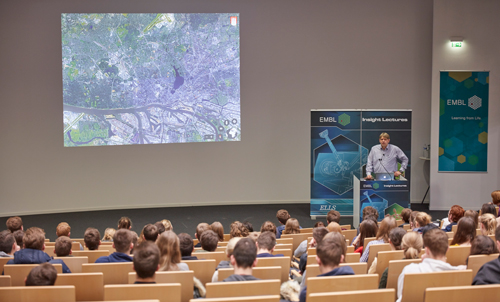
EMBL
ESA: Recycling oxygen for self-sufficient space flight
In the harsh environment of space, resources are limited. To live on-board the International Space Station (ISS), supplies must be regularly restocked by cargo vessels. Self-sufficient space flight is a possibility for the future, but will require precious resources, such as oxygen, to be recycled and reused. Astronauts on the ISS are now investigating how to do just that, with help from a single-celled microalga called Arthrospira, commonly known as spirulina.
In December 2017, samples of the bacteria were delivered to the ISS by the Space-X Dragon cargo vessel and loaded into a photobioreactor – a cylindrical container bathed in light. When the algae photosynthesise, carbon dioxide is used up, producing oxygen and edible biomass. The experiment will run for one month to measure the amount of oxygen produced, before the microalgae samples return to Earth in April. The algae’s genetic information will then be analysed to build a clearer picture of the effects of weightlessness and radiation on the plant cell.
The experiment is part of an initiative named MELiSSA (Micro-ecological Life Support System Alternative), which is developing regenerative technologies for life support. To learn more, visit the ESA website.
ESA is Europe’s gateway to space, with its headquarters in Paris, France.
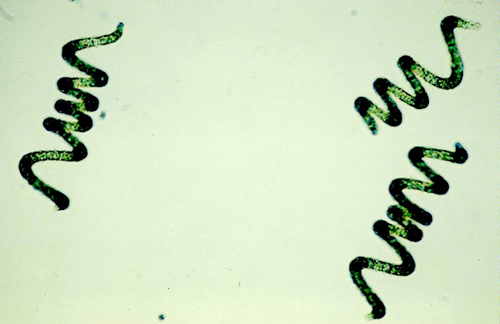
ESA
ESO: Planetarium and visitor centre to open in April
On 26 April 2018, a new attraction will open at the headquarters of the European Southern Observatory (ESO) in Garching, Germany. The ESO Supernova Planetarium and Visitor Centre will provide visitors with an immersive experience to learn about our Universe, as well as presenting them with ESO-specific scientific results, projects and technological breakthroughs.
At the heart of the new ESO centre is a digital planetarium with state-of-the-art projection technology and a scientifically accurate three-dimensional astronomical database that allows you to fly to the stars and even to the edge of the Universe. The programme of shows is displayed on a 360° dome that is 14 m in diameter, and an interactive exhibition space hosts a variety of permanent and temporary exhibitions.
The centre also offers a variety of opportunities for teachers and schools. Teachers can participate in teacher training sessions and access free educational material. Curriculum-centred visits for school groups include workshops for a variety of ages, learning-focused planetarium shows and inspirational guided tours.
To keep informed about the developments of the ESO Supernova Planetarium and Visitor Centre, visit the ESO website.
ESO is the foremost inter-governmental astronomy organisation in Europe and the world’s most productive ground-based astronomical observatory, with its headquarters in Garching, near Munich in Germany, and its telescopes in Chile.
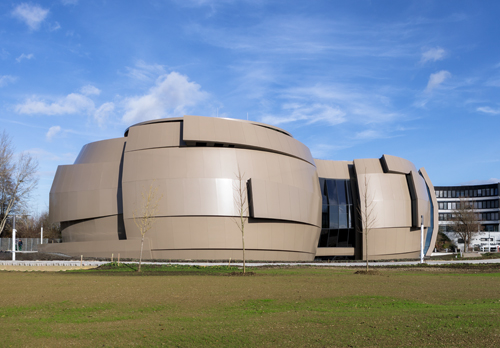
ESO
ESRF: Synchrotron sheds light on the lifestyle of a new dinosaur
A study of an exceptionally well-preserved fossil skeleton from Mongolia has led to the discovery of a new species of bird-like dinosaur related to Velociraptor. With a neck similar to a swan’s, and flipper-like forelimbs, the new dinosaur species (which also represents a new genus) combines an unexpected mix of features. These demonstrate that some predatory dinosaurs adopted a semi-aquatic lifestyle.
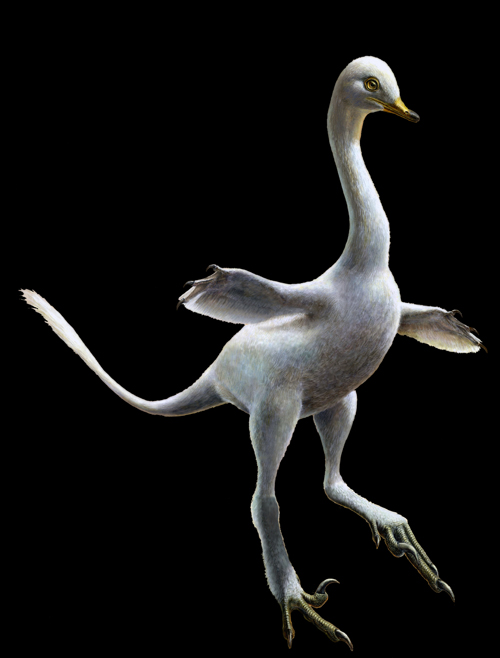
Halszkaraptor escuilliei
L Panzarin
The fossil was first smuggled out of Halszka, Mongolia, and kept in private collections around the world before it was offered to palaeontologists for study. Since the skeleton is largely covered by stone and thus much of it cannot be seen directly, an international team of researchers at the European Synchrotron Radiation Facility (ESRF) used synchrotron analysis to visualise and reconstruct the bizarre 75-million-year-old predator, named Halszkaraptor escuilliei, in three dimensions.
The experiments revealed that this amphibious dinosaur walked on two legs on land, but used its flipper-like forelimbs to manoeuvre itself in water (similar to how penguins and other aquatic birds move), while relying on its long neck for foraging and ambush hunting.
For more information on the study, read the original research paper published in Nature. See:
Cau A et al. (2017) Synchrotron scanning reveals amphibious ecomorphology in a new clade of bird-like dinosaurs. Nature 552: 395–399. doi: 10.1038/nature24679
Download the article free of charge here or subscribe to Nature today.
Situated in Grenoble, France, ESRF operates the most powerful synchrotron radiation source in Europe.
EUROfusion: World’s largest fusion experiment reaches halfway point
Fusion is the process that powers the Sun and stars, but replicating the process on Earth to meet our energy needs has proven to be one of the greatest scientific and engineering challenges. The key to overcoming these challenges, as shown by the world’s largest fusion experiment, ITER, is collaboration on a global scale.
With its seven member states (the European Union, India, Japan, China, Russia, South Korea and the United States), the ITER organisation is building the world’s biggest fusion device in Cadarache, France. And, at the end of 2017, the project announced that it had reached an important milestone: ITER is now halfway towards completion, when it will be able to begin its first experiments.
This is a significant step, not only for ITER but for the entire fusion community. Once operational, ITER will prove that fusion electricity is feasible and not just a vision. This aim lies at the heart of EUROfusion’s roadmap, which outlines how the European fusion community will reach the goal of obtaining fusion power.
EUROfusion manages and funds European fusion research activities, with the aim to realise fusion electricity. The consortium comprises 30 members from 26 European Union countries as well as Switzerland and the Ukraine.
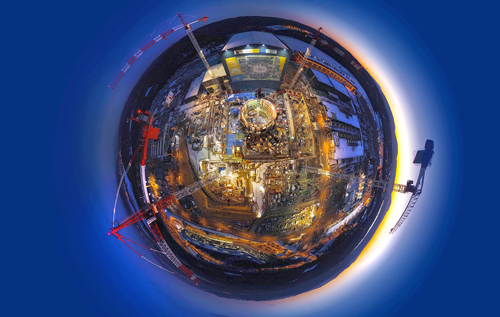
ITER
European XFEL: Impressions from the first users of new X-ray laser facility
From mid-September to early December 2017, the first external scientific researchers from across the world visited the European X-ray Free-electron Laser (European XFEL). They were there to carry out experiments at the first two operational instruments: FXE, which studies chemical reactions on extremely short timescales, and SPB/SFX, which has a strong focus on structural biology and the imaging of tiny particles.
Alexandra Ros from Arizona State University, USA, was excited to have the chance to work at the brand-new facility as one of the first user groups. “I was really amazed that we got accepted. We didn’t know what to expect before coming – every day has been a steep learning process”, she said.
For Matthias Vogt, a researcher from the University of Bremen, Germany, working with the scientists at European XFEL will be crucial for developing his group’s luminescence compound into a material applicable in organic LEDs. “We’re very grateful for the outstanding support of the FXE scientists on site; their expertise is key to the success of our experiment”, he said.
European XFEL is looking forward to welcoming the second round of users in May 2018.
To read stories from the first users of the facility, visit the European XFEL website.
European XFEL is a research facility in the Hamburg area in Germany. Its extremely intense X-ray flashes are used by researchers from all over the world.
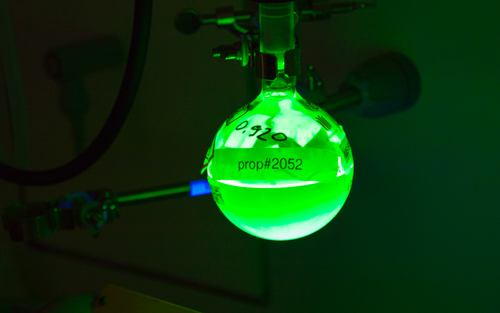
European XFEL
ILL: New insight into enzyme useful for drug development
A recent study has used neutrons to successfully visualise the structure of aspartate aminotransferase, an enzyme vital to the metabolism of certain amino acids. This could open avenues for new antibiotics and drugs to battle diseases such as drug-resistant tuberculosis, malaria and diabetes.
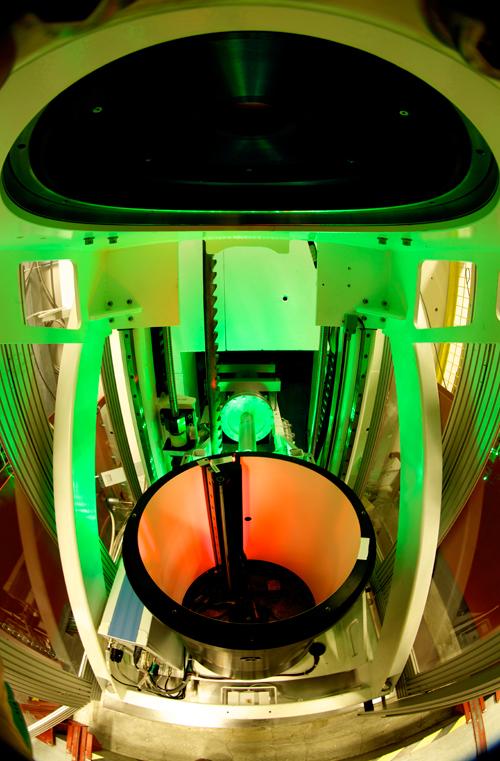
Institut Laue-Langevin
R Cubitt
Aspartate aminotransferase is one of a group of vitamin B6-dependent proteins – a diverse group of enzymes that conduct over a hundred different chemical reactions in cells. Carried out at the Institut Laue-Langevin (ILL), the study used neutron crystallography on the ILL LADI instrument to study a vitamin B6-dependent protein for the first time. By exposing delicate protein crystals to neutrons using the ILL beamline, scientists determined the location of hydrogen atoms in the enzyme. Knowing the precise location of hydrogen atoms can help to explain why the behaviour of B6-dependent enzymes is so specific.
This study highlights how neutrons are an unrivalled probe for identifying the location of hydrogen atoms in biological systems, providing us with an unprecedented level of structural detail for this important enzyme.
Based in Grenoble, France, ILL is an international research centre at the leading edge of neutron science and technology.
EIROforum
EIROforum combines the resources, facilities and expertise of its member organisations to support European science in reaching its full potential.
To learn more, see also the list of EIROforum-related articles in Science in School or browse the other EIRO news articles.






